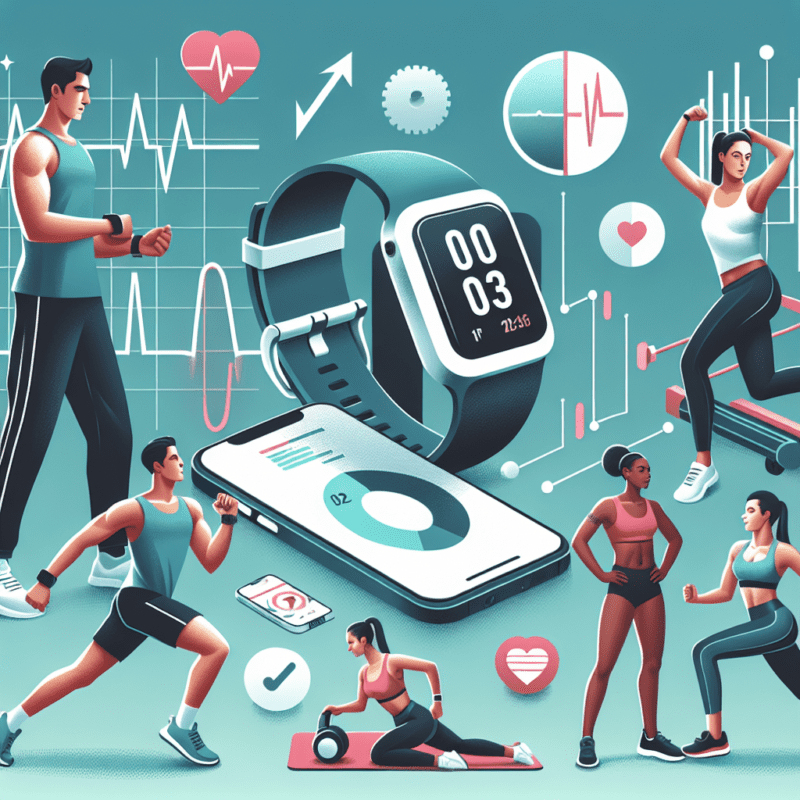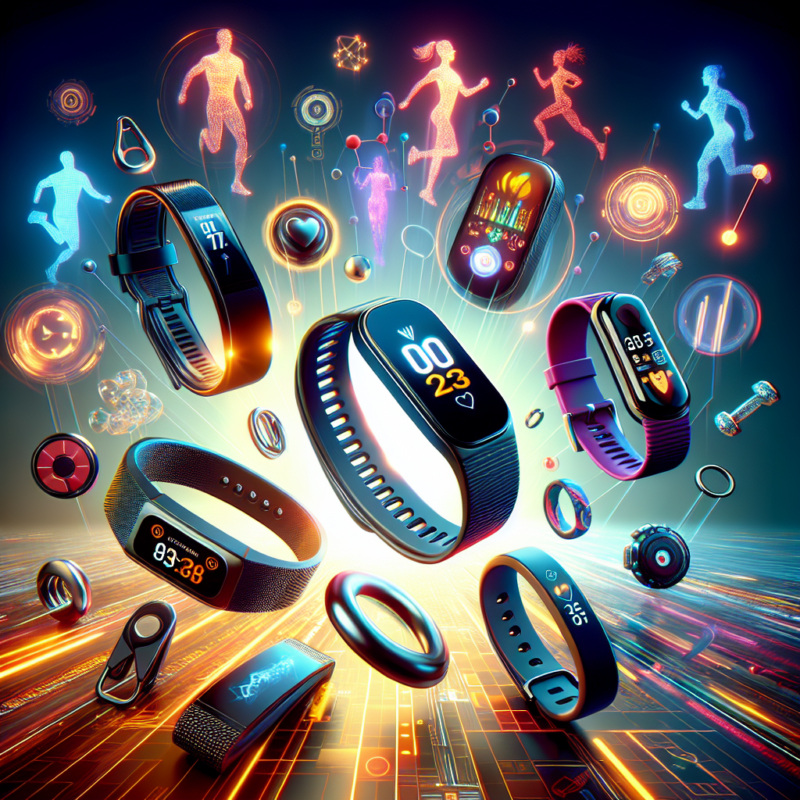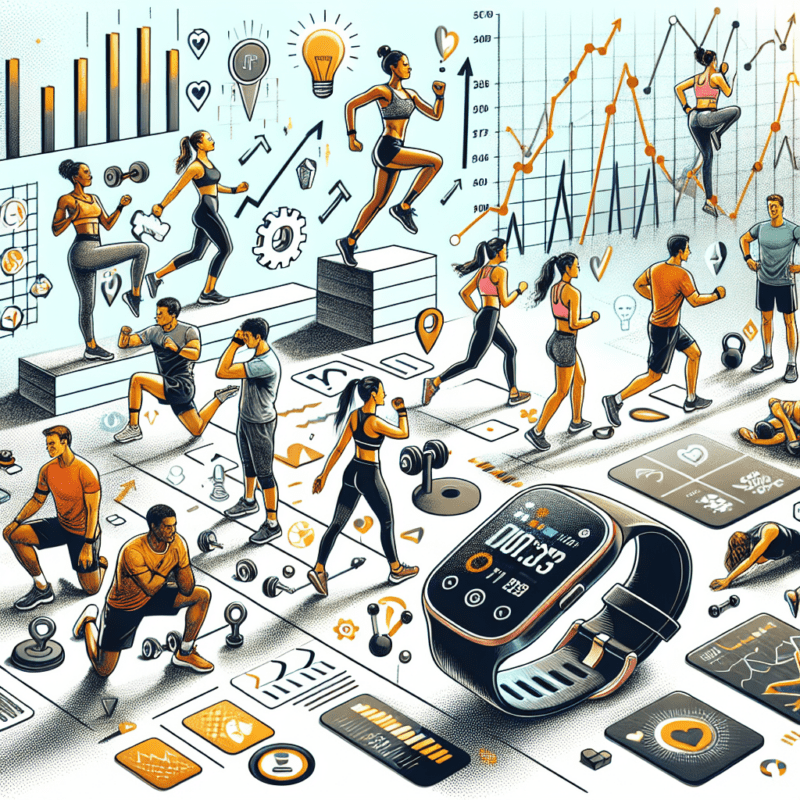Fitness Tracking Devices: Revolutionizing Your Exercise Routine
In recent years, fitness tracking devices have emerged as a game-changer in the world of personal health and fitness. These devices equip individuals with the tools to monitor their physical activity, heart rate, calories burned, and overall fitness levels in real-time. As the fitness landscape continually evolves, the importance of these devices has grown, empowering users to make informed decisions about their workout routines. This article will explore how fitness tracking devices are revolutionizing exercise strategies and the numerous benefits they offer.
Understanding Fitness Tracking Devices
Fitness tracking devices come in various forms, including wearable gadgets, smartwatches, and mobile apps, each designed to capture a wide array of health metrics. These devices typically feature sensors that track physical activity, monitor heart rates, and even provide data on sleep patterns. The integration of technology into fitness routines allows users to not only monitor their progress but also to set specific, measurable goals to enhance their overall health journey.
The surge in popularity of fitness tracking devices can be attributed to several factors. With increasing awareness of health and wellness, individuals are on the lookout for effective tools that help them stay motivated and accountable. Additionally, advancements in technology have made these devices more user-friendly and affordable, making them accessible to a broader audience. As a result, fitness tracking has shifted from niche products to mainstream necessities for fitness enthusiasts and casual exercisers alike.
Benefits of Using Fitness Trackers
One of the most significant advantages of fitness tracking devices is their ability to provide real-time feedback. Users can see exactly how their bodies respond during different types of workouts, helping them to adjust their routines for maximum efficiency. For instance, tracking heart rate during cardio exercises ensures that individuals are working within optimal zones for fat burning or cardiovascular endurance. This responsive feedback loop encourages users to push themselves further or scale back when necessary, which is crucial for long-term fitness improvement.
Another benefit of fitness tracking devices is the ability to set and achieve personalized goals. With features such as daily step counts, calorie tracking, and workout summaries, users can create fitness objectives tailored to their capabilities and lifestyle. As users achieve these incremental goals, they experience a sense of accomplishment and motivation, which fosters an ongoing commitment to their fitness journey. As they progress, many devices allow users to set new challenges, creating an ongoing loop of improvement and engagement.
Popular Fitness Tracking Devices on the Market
When evaluating the landscape of fitness tracking devices, several notable contenders stand out for their features, usability, and reliability. Devices such as the Fitbit, Garmin Forerunner, and the Apple Watch have garnered attention for their comprehensive tracking capabilities and user-friendly interfaces. Fitbit, for example, offers a range of models catering to different fitness levels and preferences, from basic step counters to advanced multi-sport trackers that monitor everything from running to swim performance.
Garmin’s Forerunner series is particularly favored among serious athletes for its GPS tracking and specialized metrics, including VO2 max estimates and training load analysis. Meanwhile, the Apple Watch has revolutionized fitness tracking by seamlessly integrating health monitoring with an array of smartphone features, such as notifications and apps, making it a popular choice for users seeking a multifunctional device. Each of these options provides unique functionalities that cater to various fitness needs, making it essential for potential users to consider their specific goals when selecting a device.
Integrating Fitness Trackers into Your Routine
Successfully incorporating fitness trackers into your exercise routine requires a strategic approach. First, it’s vital to define your fitness objectives clearly. Whether your goal is to lose weight, build endurance, or improve muscle tone, having a clear target helps guide your tracking efforts. Establishing specific metrics to watch, such as daily steps, calorie intake, or workout durations, can enhance accountability and motivation. It’s beneficial to utilize the insights provided by the device to adapt your goals as you progress.
Second, consider leveraging the social features often embedded in fitness tracking devices and associated apps. Most modern devices allow users to connect with friends or family members for added motivation through challenges, sharing achievements, or competing in friendly contests. This social interaction not only fosters a sense of community but also encourages continuous engagement with your fitness journey. You can celebrate accomplishments and provide encouragement, creating a supportive network that enhances your routine’s effectiveness and enjoyment.
Finally, use the data collected by your fitness tracker as a guide for adjusting your routines. Analyze trends in your performance statistics—such as improvements in your running pace or increases in calorie burn during workouts—to inform your exercise plan. For example, if you notice consistent struggles with a specific type of workout, it may be time to reevaluate your approach or seek out professional training advice to overcome those obstacles.
The Future of Fitness Tracking Devices
As technology continues to progress, the future of fitness tracking devices looks incredibly promising. Emerging innovations such as advanced biometric sensors, AI-driven algorithms, and improved integrations with health and wellness apps will allow for even more personalized and effective fitness experiences. For instance, biometric sensors may soon monitor more than just heart rates, including factors such as blood glucose levels or hydration status, providing users with insights into how various lifestyle choices impact their fitness.
Moreover, the rise of virtual and augmented reality in the fitness realm promises exciting new opportunities for users of fitness tracking devices. By combining immersive environments with real-time feedback, these technologies can facilitate engaging workout sessions that hold users’ attention while providing the data they need for performance enhancement. Such advancements will likely revolutionize traditional workouts, leading to increased adherence and enjoyment for fitness enthusiasts.
Additionally, the growing emphasis on holistic health and wellness suggests that future fitness tracking devices will incorporate more than just physical measures. Metrics such as mental health indicators, stress levels, and meditation practices may soon be integrated into these devices, promoting a more comprehensive approach to fitness and well-being. This trend highlights the important shift towards recognizing the connection between mind and body, suggesting that fitness tracking devices will need to evolve accordingly.
Conclusion
Fitness tracking devices are revolutionizing the way we approach exercise and overall wellness. By providing real-time feedback, facilitating goal setting, and enabling social connections, these devices empower users to take control of their fitness journeys. As technology evolves, so too will these devices, offering new ways to enhance physical performance and overall health. Whether you are a seasoned athlete or a fitness novice, embracing fitness tracking technology can lead to a more fulfilling, efficient, and enjoyable exercise routine.
FAQs
What is a fitness tracker and how does it work?
A fitness tracker is a device that monitors various health metrics, such as steps taken, calories burned, heart rate, and sleep patterns. It works using embedded sensors that track your activity levels and provide users with real-time feedback through connected apps or displays.
Can fitness trackers help with weight loss?
Yes, fitness trackers can be effective tools for weight loss. By monitoring physical activities, users can gain insights into their calorie expenditure and make informed choices regarding diet and exercise, ultimately facilitating a weight loss journey.
What features should I look for in a fitness tracker?
When selecting a fitness tracker, consider features such as heart rate monitoring, GPS capabilities, water resistance, battery life, and compatibility with your smartphone. Carefully evaluate which features align with your fitness goals and lifestyle for optimal results.
Are fitness trackers accurate?
While fitness trackers are generally accurate for measuring steps and monitoring heart rates, variations may occur based on the device and user activity types. It’s essential to use trackers as a guide rather than the sole metric when assessing your fitness levels.
Do fitness trackers require a subscription?
Most fitness trackers do not require a subscription for basic functionalities; however, some may offer premium features or advanced analytics through subscription models. Be sure to assess any ongoing costs associated with the device before making a purchase decision.



